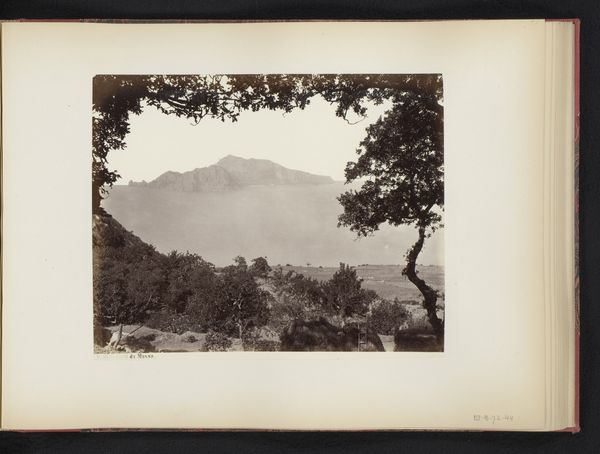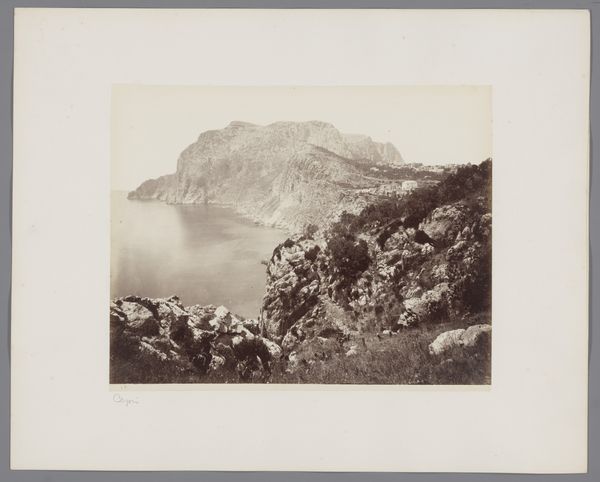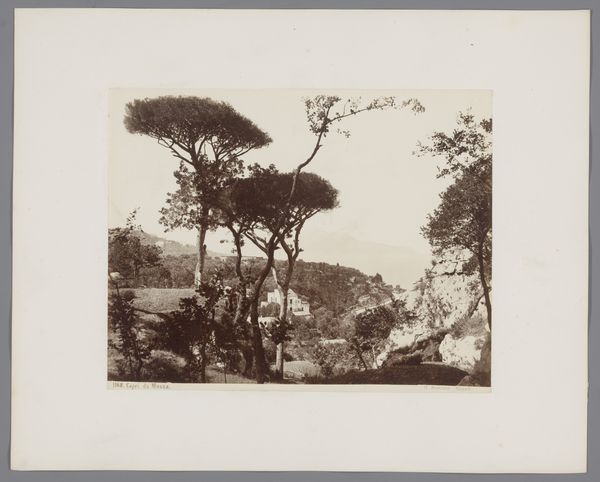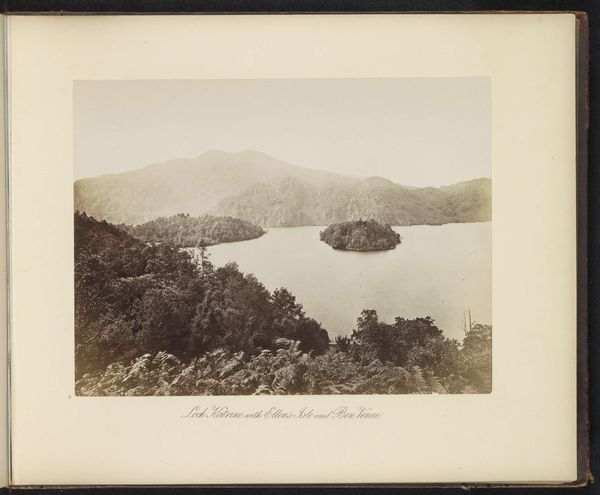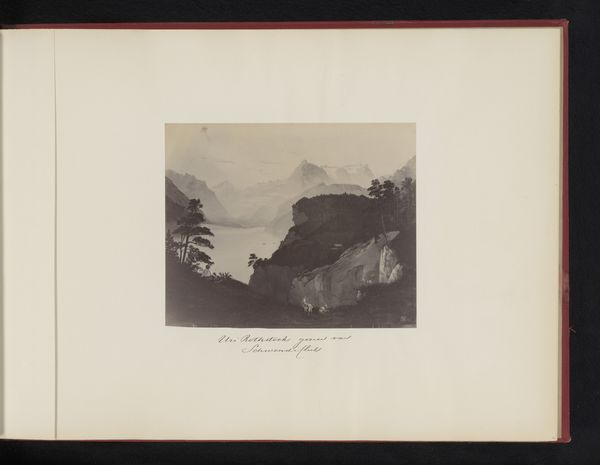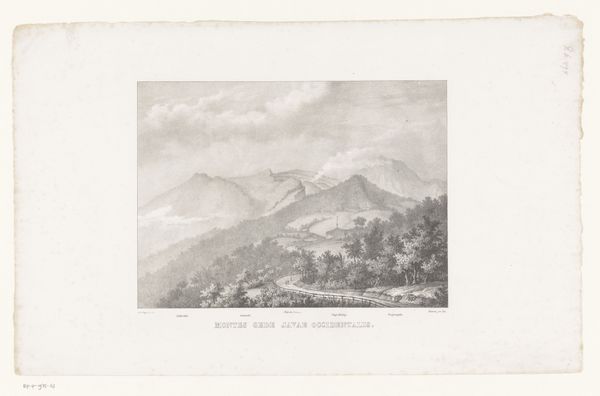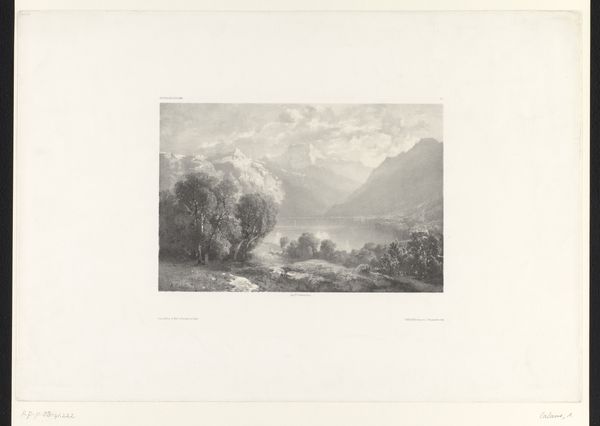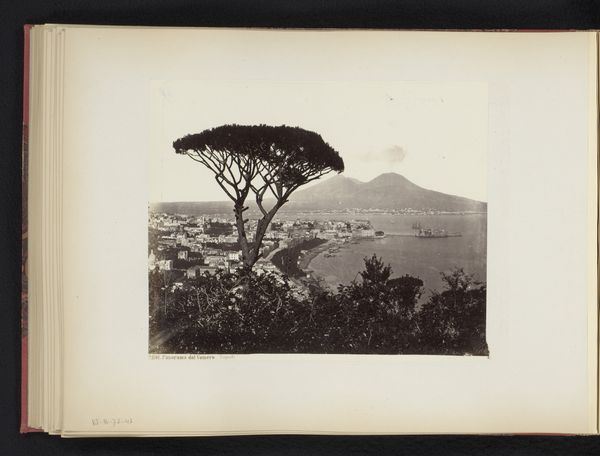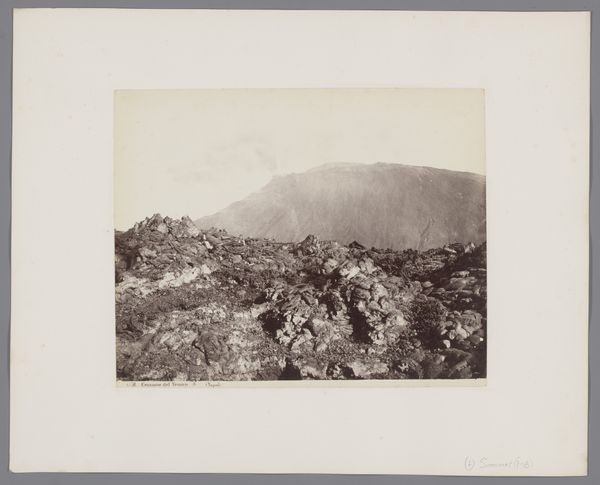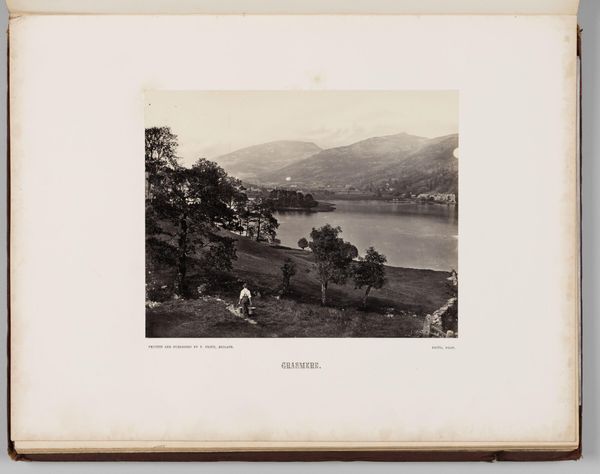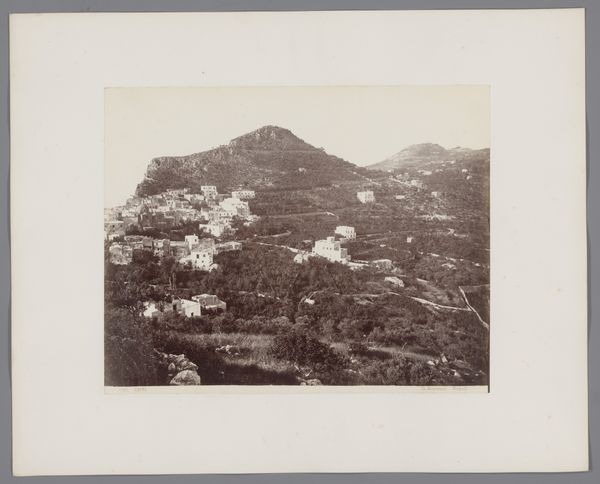
Copyright: Public Domain
Giorgio Sommer captured this view of Capri from Massa Lubrense with his camera, immortalizing a scene that resonates with timeless symbolism. The island, framed by the trees, becomes a sanctuary, a motif echoing the classical "locus amoenus"—an idealized place of safety and natural beauty. Think of the Hesperides' garden, a hidden refuge promising immortality. This idyllic vision, however, is tinged with melancholy; the island, though inviting, remains distant, a promise unfulfilled. The trees that act as a frame around the composition, also carry cultural and historical meaning, evoking the threshold between civilization and nature, the known and the unknown. This gateway stirs a deep, subconscious yearning for paradise lost. The view invites reflection on the cyclical nature of human desires and the enduring search for an unattainable ideal.
Comments
stadelmuseum about 2 years ago
⋮
On his wanderings in Southern Italy, Giorgio Sommer concentrated more than most of his photographer colleagues on the beauty of the landscape. He had the help of natural circumstances to arrive at this especially striking shot of Capri, an island in the Gulf of Naples that is still as popular with tourists as ever. The olive trees at the left and right frame it in such a way as to create a picture within a picture. The use of treetops for this purpose is a classical element of landscape painting. The two barefoot boys at the left not only enliven the composition but also serve as scale figures and underscore the vastness of natural setting. At the same time, they point to another area of Sommer’s repertoire: genre scenes from what was imagined to be typical everyday life in Southern Italy.
Join the conversation
Join millions of artists and users on Artera today and experience the ultimate creative platform.
